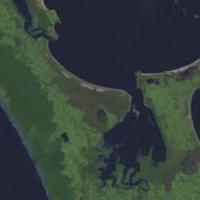 W
WThe Ahukawakawa Swamp is an area of sphagnum bog in Egmont National Park in the Taranaki Region of New Zealand. It was formed approximately 3,500 years ago and is of particular interest to botanists. Over 260 species of higher plant have been recorded there. The area of the swamp is approximately 1 km2.
 W
WThe Kaimaumau wetland is a wetland by the Rangaunu Harbour, in Northland, New Zealand. At approximately 1,860 hectares, it is one of the largest remaining wetlands in Northland. It comprises the Otiaita and Waihauhau swamps, Motutangi Swamp Scientific Reserve, and Lake Waikaramu. The wetland is currently threatened by peat mining and by water loss from avocado growing.
 W
WSome of the most fertile land in the southwestern North Island of New Zealand is on the floodplains of the Manawatu and Rangitikei Rivers, in an area known as the Manawatu Plains.
 W
WNelson Haven is an extensive area of mudflats northeast of Nelson, New Zealand. It is separated from Tasman Bay by the Boulder Bank and over 8 km long and up to 2 km wide. The area is regularly completely drowned and exposed by tidal action and supports a large population of mud crabs.
 W
WPauatahanui Wildlife Reserve is a wetland reserve located in Pauatahanui and on the eastern edge of the Pauatahanui Inlet of the Porirua Harbour in Porirua, New Zealand.
 W
WPekapeka Wetland is a wetland reserve located 12 kilometres by road south of Hastings in the Poukawa Basin of Hawke's Bay, New Zealand.
 W
WTaupo Swamp is an approximately 25-hectare (62-acre) lowland freshwater swamp, classified as a topogeneous mire, located three kilometres (1.9 mi) north of Plimmerton and 20 kilometres (12 mi) north-northeast of Wellington City, New Zealand. Taupo Swamp is home to largely indigenous vegetation including sedges, flax, ferns, shrubs, herbaceous plants, and grasses. The swamp is visible from State Highway 1 and the North Island Main Trunk railway.
 W
WTravis Wetland is an ecological restoration programme in the suburb of Burwood in Christchurch, New Zealand.